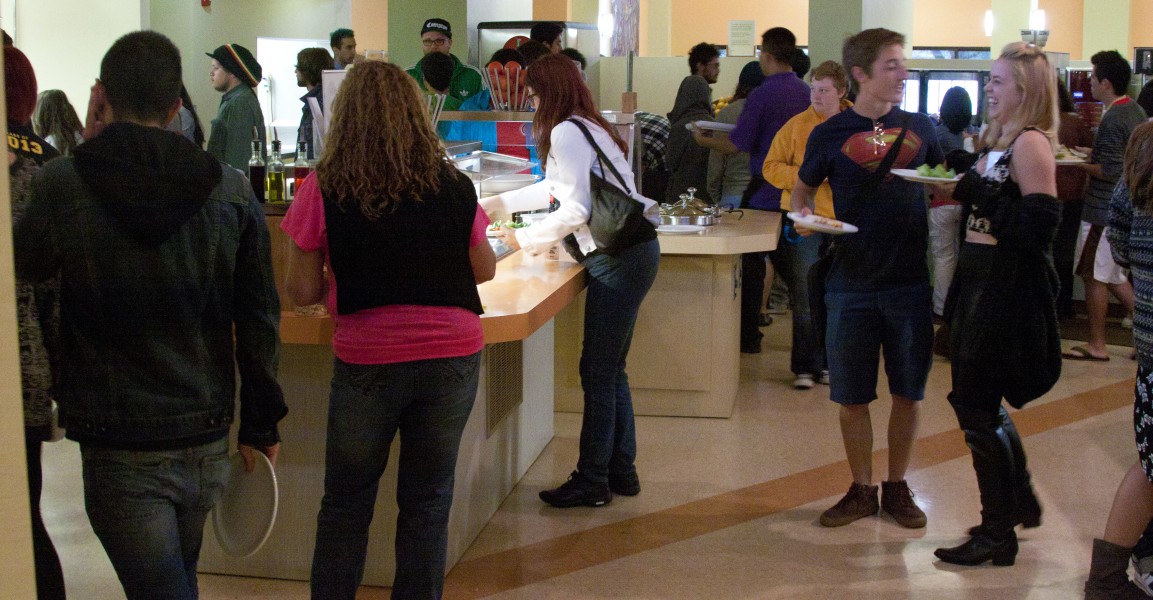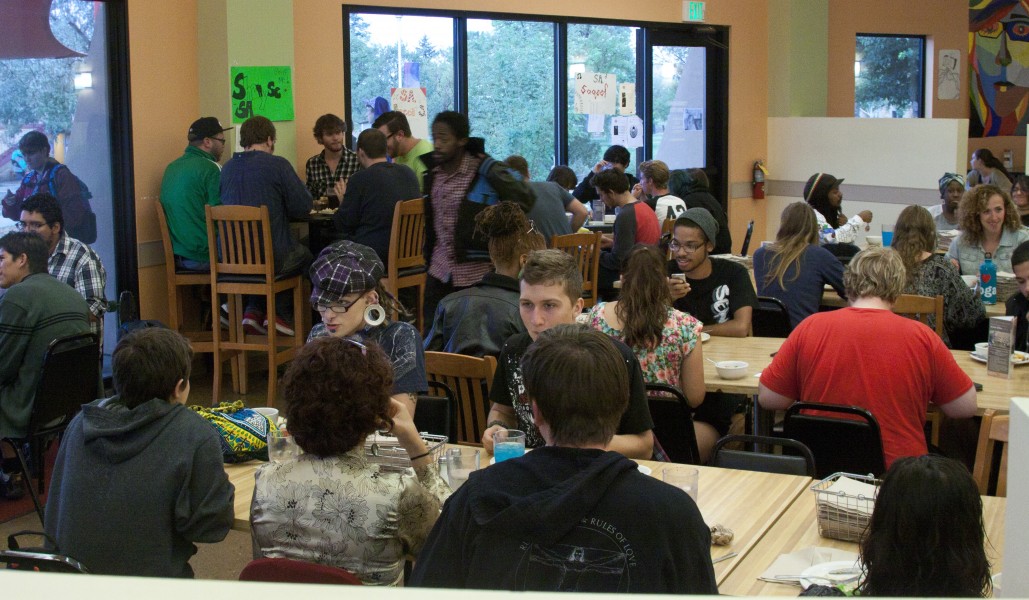Tags
Related Posts
Share This
Enrollment Snapshot
By Arianna Sullivan
The 2013-‘14 school year began with rumors that the Santa Fe University of Art and Design had suddenly increased its student numbers by the hundreds. There were students momentarily camped out in King Lounge because the dorms had been over-booked, and students received an email from student life before the first day of classes reiterating that each meal time consists of a two-hour block in an attempt to cut down on the long lines already forming in the cafeteria. It was clear from the get-go that student numbers were up, but by exactly how much remained to be seen—even by enrollment staff—until the add-drop period ended on Aug. 30.
The magic number of new students: 430. The incoming students are divided into domestic (262), international (19) and network (149). The total number of new students has increased from 18 in 2010, when the school officially became SFUAD, so clearly progress is being made. How exactly are these numbers increasing? Christine Guevara, SFUAD’s executive director of student operations, explains the ins and outs of the enrollment process that yields these numbers.
While SFUAD is a Laureate International University network school, its enrollment process happens internally. The university has six field reps, or representatives of the school, who visit high schools to attend college fairs and talk to college counselors and students. These representatives are located in Northern California, Southern California, Arizona, Colorado, Texas and New Mexico. The target states are concentrated in the west and southwest because studies by higher education consultants such as Noel-Levitz show that students are becoming less and less likely to travel further distances for undergraduate education. SFUAD also enlists its department chairs to travel around the country to hold workshops and introduce the school to high school students through direct contact.
Once a prospective student makes contact with the school, he or she is assigned an enrollment advisor who will stay with the student and, as Guevara says, “essentially hold their hand through the entire application process.” The university holds three open houses in the fall and six in the spring, giving visiting perspectives an opportunity to meet with student life, department chairs, and current students. The largest fall-out of prospective students occurs at this moment—between inquiry and application.
As soon as a student applies to SFUAD, the chair of the department they are applying to reviews his or her portfolio. This is, in many ways, the main moment of reckoning; most of the decision-making behind a student’s acceptance or rejection is based on the chairs’ assessment of what Guevara calls a student’s “artistic talent.” The chairs present a list of students who they think would be a good fit for the school to the admissions committee members, who begin crunching numbers. Transcripts are reviewed, and students with high school GPAs below a 2.0, require a review. The review process consists of a meeting of representatives from the respective department and from student life, who work to make a holistic decision about whether or not the school could realistically support a student’s needs or not.
The next step is one we are all too familiar with: the letter of acceptance or denial. At this point the scholarship committee comes into play, deciding which scholarships a student may be eligible for. At SFUAD currently, almost 100 percent of the students receive some kind of scholarship. Students are then guided to the financial aid office, where their FAFSA is reviewed and a financial aid advisor has what is called a Comprehensive Cost Discussion with the student to ensure that his or her financial needs will be met from the start to the finish of their academic career. This is the moment where the second highest numbers of prospective students drop out of the application process.
Guevara explains that once a student is admitted to SFUAD, about half actually enroll. This is more of a glass half full than a glass half empty statistic, however, when placed next to the national average of 29%. While the $10-12,000 average out-of-pocket tuition that a student pays at SFUAD is much lower than many private universities around the country, the University of New Mexico’s lottery scholarship is an allure that provides high competition. Most students who choose SFUAD over cheaper—or free—options do so, explains Guevara, out of a certainty that design school is a better fit for them than an un-specialized state school. “I think,” she concedes, “it is sheer artistic ambition and passion that brings students here,” and based on the growing student body, she seems to have a point.









 Jackalope Magazine is the student magazine of Santa Fe University of Art and Design. Building on the interdisciplinary nature of our education, we aim to showcase the talent of our university and character of our city.
Jackalope Magazine is the student magazine of Santa Fe University of Art and Design. Building on the interdisciplinary nature of our education, we aim to showcase the talent of our university and character of our city.
Recent Comments